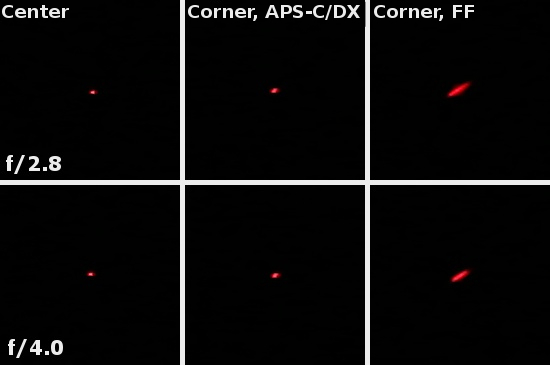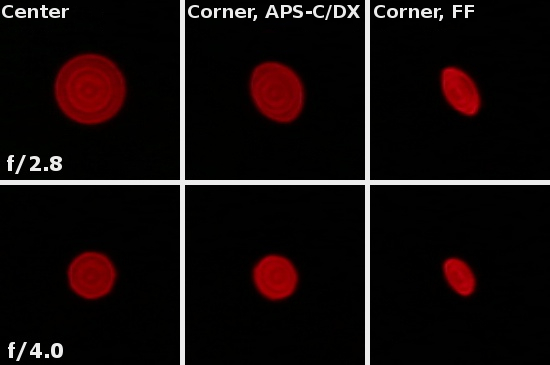Samyang 12 mm f/2.8 ED AS NCS Fish-eye
7. Coma, astigmatism and bokeh

The astigmatism, understood as an average difference between horizontal and vertical MTF50 function values, amounted to 6.6%. It is a moderate value and it looks even better if you remind yourself that any fisheye lens is at a disadvantage when it comes to that particular aberration. Huge deformations of the image mean the resolution and astigmatism measuring areas are further away from the frame centre than in the case of classic lenses; it makes fisheye devices more prone to off-axis aberrations in turn.
Please Support UsIf you enjoy our reviews and articles, and you want us to continue our work please, support our website by donating through PayPal. The funds are going to be used for paying our editorial team, renting servers, and equipping our testing studio; only that way we will be able to continue providing you interesting content for free. |
- - - - - - - - - - - - - - - - - - - - - - - - - - - - - - - - - - - - - - - - - - - - - - - -
The appearance of defocused images doesn’t make us impressed. You see a lot of concentric rings and deformations. Still it is really difficult to get big, defocused areas with a fisheye lens.







